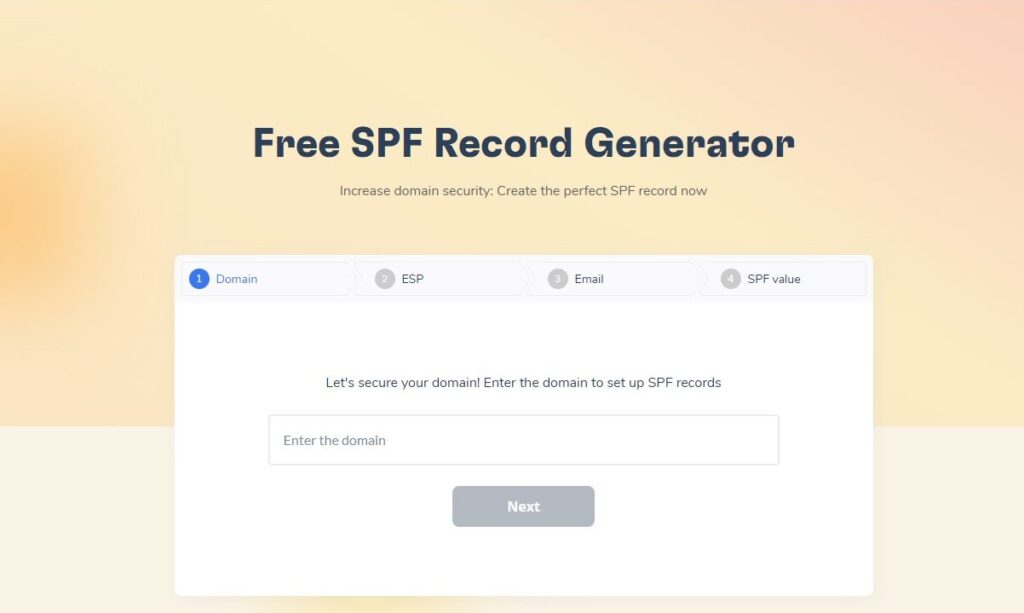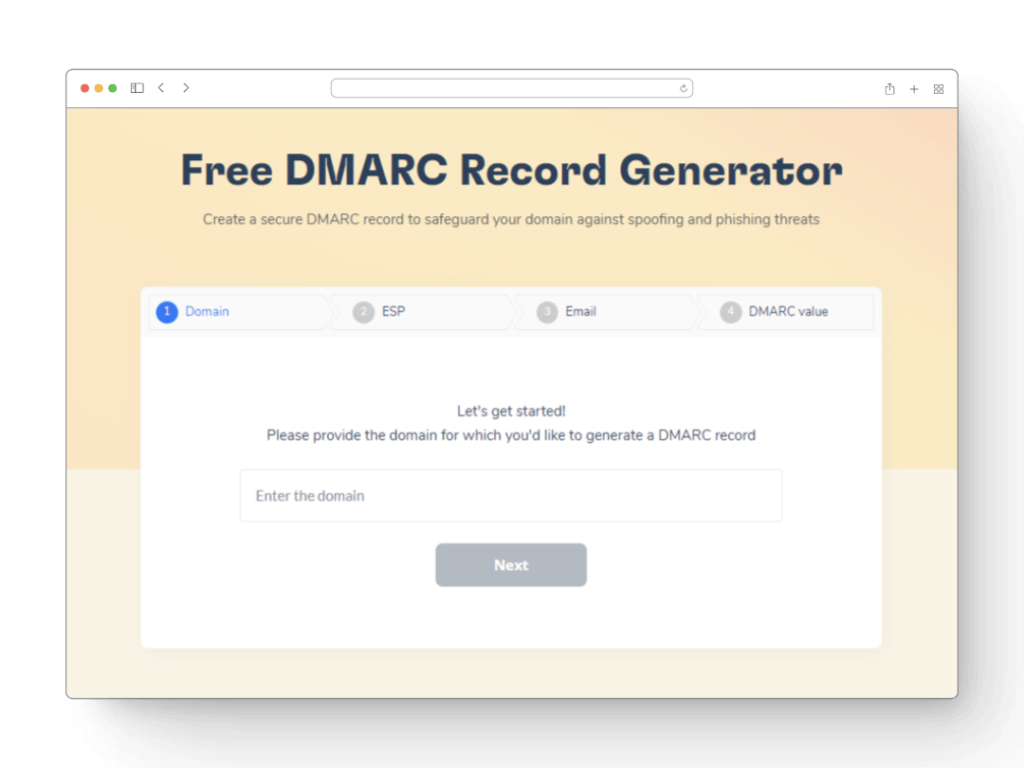Email has become an indispensable mode of communication for both personal and business purposes. However, the widespread use of email has also made it a prime target for cyber threats, such as phishing, spoofing, and unauthorized access. To counter these challenges and ensure the authenticity of email communication, three essential email authentication protocols come into play: SPF, DKIM, and DMARC.
1. Understanding SPF (Sender Policy Framework)
SPF, short for Sender Policy Framework, is an email validation system designed to prevent email spoofing. Email spoofing occurs when a malicious actor impersonates a legitimate sender’s email address to deceive recipients. SPF works by allowing domain owners to publish a list of authorized email servers, thereby enabling email receivers to verify the authenticity of incoming messages.
To implement SPF, domain owners need to create a DNS (Domain Name System) record containing a list of IP addresses authorized to send emails on behalf of their domain. When an email is received, the recipient’s email server can check the SPF record to ensure that the sender’s IP address matches the list of approved servers. If the validation fails, the email may be marked as spam or rejected altogether.

Take the first step towards securing your email delivery with Warmy’s Free SPF Record Generator. Our user-friendly tool simplifies the creation of SPF records to protect your domain against spoofing and ensure your emails reach their intended destination. Don’t let your messages get sidelined by spam filters. Visit Free SPF Record Generator and fortify your email authenticity today. It’s quick, easy, and absolutely free!
2. Deciphering DKIM (DomainKeys Identified Mail)
DKIM, which stands for DomainKeys Identified Mail, is another critical email authentication protocol. DKIM uses digital signatures to verify the integrity of an email message and confirm that it originated from the stated domain. This process involves adding a digital signature to the message’s header using a private key, which can be validated using a public key stored in the domain’s DNS records.
The DKIM signature ensures that the email’s content has not been altered in transit and that it indeed came from the claimed domain. Email receivers can validate the DKIM signature to determine whether the email is genuine and whether it has been tampered with during transmission.
3. The power of DMARC (Domain-based Message Authentication, Reporting, and Conformance)
DMARC, an acronym for Domain-based Message Authentication, Reporting, and Conformance, is a comprehensive email authentication protocol that leverages both SPF and DKIM. DMARC enables domain owners to set policies for how their emails should be handled when received by email providers.
By combining SPF and DKIM, DMARC provides an additional layer of security and ensures that emails are not only authenticated but also properly aligned with the sender’s domain. DMARC policies can instruct email receivers to take specific actions, such as marking unauthenticated emails as spam or rejecting them entirely.
4. Advantages of SPF, DKIM, and DMARC
Implementing SPF, DKIM, and DMARC offers numerous benefits for both email senders and recipients:
✔ Enhanced Email Deliverability.
Emails that pass SPF, DKIM, and DMARC authentication are more likely to reach recipients’ inboxes, improving overall deliverability rates.
✔ Increased Protection Against Phishing and Spoofing Attacks.
SPF, DKIM, and DMARC protocols help prevent cybercriminals from impersonating legitimate senders, reducing the risk of phishing and spoofing attacks.
✔ Strengthened Domain Reputation and Brand Trust.
Consistent use of email authentication builds trust with recipients and email providers, enhancing the reputation of the sender’s domain.
5. Common challenges and misconfigurations
While SPF, DKIM, and DMARC are powerful tools for email security, misconfigurations and mistakes can hinder their effectiveness. Some common challenges include:
✔ Mistakes to Avoid During SPF Setup
Incorrectly configuring SPF records can lead to email delivery issues, so it’s essential to double-check the syntax and include all authorized servers.
✔ Handling DKIM Key Management
Proper management of DKIM keys is crucial to maintaining email authenticity. Regularly rotating keys and ensuring their security are essential steps.
✔ Understanding DMARC Policy Options and Potential Issues
Misconfiguring DMARC policies can lead to unintended consequences, such as legitimate emails being rejected. It’s vital to choose appropriate policies based on the domain’s email practices.
6. Best practices for SPF, DKIM, and DMARC
To maximize the effectiveness of SPF, DKIM, and DMARC, follow these best practices:
✔ Using a Strong SPF Policy. Craft a comprehensive SPF policy that includes all authorized email servers and uses a hard fail (-all) mechanism to prevent unauthorized emails.
✔ Generating and Rotating DKIM Keys. Generate robust DKIM keys and rotate them periodically to reduce the risk of key compromise.
✔ Setting Appropriate DMARC Policies for Your Domain. Start with a monitoring-only (p=none) policy to analyze email traffic, then gradually move to a stricter enforcement policy.
7. Analyzing DMARC reports
Analyzing DMARC (Domain-based Message Authentication, Reporting, and Conformance) reports is an important aspect of maintaining email security. DMARC is a protocol that helps protect email domains from spoofing and phishing attacks by allowing domain owners to specify policies for email authentication and receive feedback on how their emails are being handled by receivers. Analyzing DMARC reports allows domain owners to gain insights into the handling of their emails and identify potential issues or threats. Here’s a step-by-step guide on how to analyze DMARC reports:
1. Configure DMARC
Before you can analyze DMARC reports, you need to set up DMARC for your domain. This involves adding a DMARC policy to your domain’s DNS records, specifying how you want receivers to handle emails that fail authentication checks. You can set the policy to either “none” (monitoring mode) or “quarantine”/”reject” (action mode). In “none” mode, you will receive reports but no action will be taken on failed emails. In “quarantine” or “reject” mode, emails that fail authentication may be sent to the spam folder or rejected outright.
2. Collect DMARC Reports
Once DMARC is configured, DMARC-compliant receivers will start sending you aggregate reports. These reports contain information about the emails they have received from your domain, including authentication results (pass/fail), sources of emails, and any issues encountered.
3. Parse the Reports
DMARC reports are typically delivered in XML format. To analyze them, you can use various DMARC reporting and analysis tools available online. These tools can help parse the XML data and present it in a more human-readable format.
4. Identify Sources
Analyzing DMARC reports allows you to identify legitimate and unauthorized sources of emails sent on behalf of your domain. Check the “From” domain field to ensure it aligns with your domain. If there are sources that you don’t recognize or expect, they might be unauthorized senders attempting to impersonate your domain.
5. Review Authentication Results
Pay attention to the authentication results for each email. Emails that pass DMARC alignment (e.g., SPF and DKIM) are legitimate and align with your domain’s policy. On the other hand, emails that fail DMARC alignment are potential threats and may require further investigation.
6. Monitor Failure Rates
Keep track of the percentage of emails that fail DMARC checks. A high failure rate might indicate a higher risk of phishing or spoofing attacks targeting your domain.
7. Take Action
Based on the DMARC reports, you can take appropriate action to enhance your email security. For example, you can tighten your DMARC policy to “quarantine” or “reject” mode if you find a low number of legitimate emails failing DMARC checks. However, it’s crucial to be cautious as misconfigurations could lead to false positives and result in legitimate emails being blocked.
8. Address Configuration Issues
DMARC reports may reveal configuration issues with SPF and DKIM records. Ensure that all legitimate email sources are correctly authorized through SPF and DKIM to reduce false positives and negatives.
9. Continuously Improve
Regularly analyze DMARC reports and use the insights gained to refine your email authentication policies and security measures. Stay up to date with best practices and changes in the email landscape to adapt to new threats effectively.
Don’t miss out on Warmy’s latest innovation – a free DMARC Generator tool! It’s the simplest way to protect your email domain. Start now: Free DMARC Record Generator

8. The future of email security
The future of email security holds promising advancements and innovations to counter the ever-evolving cyber threats. As technology progresses, so do the techniques employed by cybercriminals. To safeguard our communication channels, several trends and developments are likely to shape the future of email security:
1. Advanced Authentication Mechanisms. Traditional username and password combinations are vulnerable to phishing attacks. The future will witness widespread adoption of more robust authentication methods like multi-factor authentication (MFA) and biometrics, ensuring only authorized users access their email accounts.
2. End-to-End Encryption. To prevent unauthorized access to email content, end-to-end encryption will become more prevalent. This means that messages are encrypted from the sender’s device and only decrypted on the recipient’s device, making it nearly impossible for intermediaries or hackers to intercept and read the content.
3. AI-Powered Threat Detection. Artificial intelligence and machine learning algorithms will be integrated into email security systems to analyze email patterns, detect anomalies, and identify potential threats in real-time. This proactive approach will help in blocking spam, phishing attempts, and malware-laden attachments more effectively.
4. Domain-based Message Authentication, Reporting, and Conformance (DMARC). DMARC is a protocol that enables domain owners to protect their email domains from spoofing and phishing attacks. Its implementation will be widespread, reducing the likelihood of attackers impersonating legitimate domains.
5. Zero-Trust Security Model. The zero-trust model assumes that no user or device should be inherently trusted. This approach will extend to email security, where even authenticated users will be continuously monitored, and their access to sensitive information will be strictly controlled.
6. Enhanced Employee Training and Awareness. Despite advanced technologies, human error remains a significant threat. Organizations will invest more in comprehensive cybersecurity training for employees to recognize and report potential security threats effectively.
7. Containerization and Sandboxing. To isolate email attachments and URLs, containerization and sandboxing techniques will gain popularity. These measures will help prevent malware from spreading across a network even if an email attachment is infected.
8. Email Gateway Security. Email gateway solutions will become more sophisticated, combining multiple layers of security to filter out malicious emails before they reach the end-user’s inbox.
9. Blockchain for Email Security. Although still in its infancy, blockchain technology holds the potential to enhance email security. By providing immutable records of email communications, it can offer improved authenticity and tamper-resistant message tracking.
10. Regulatory and Industry Standards. Governments and industries will continue to strengthen regulations and compliance standards related to email security, imposing penalties for organizations that fail to meet the requirements.
Conclusion
In conclusion, SPF, DKIM, and DMARC are vital components of a comprehensive email security strategy. By implementing these protocols, organizations can bolster email deliverability, protect recipients from phishing attacks, and maintain the integrity of their domain reputation. Embracing email authentication best practices and staying informed about evolving email security technologies will be key to safeguarding digital communication in the future.
FAQ
What happens if my emails fail SPF, DKIM, or DMARC authentication?
If your emails fail authentication, they may be marked as spam or rejected by the recipient's email server.
Are SPF, DKIM, and DMARC compatible with all email providers?
Yes, most email providers support SPF, DKIM, and DMARC, but their level of support may vary.
Can SPF, DKIM, and DMARC completely eliminate phishing attacks?
While these protocols significantly reduce the risk of phishing attacks, no security measure can guarantee complete elimination.
Is it essential for small businesses to implement email authentication protocols?
Yes, small businesses are also susceptible to email-based threats and can benefit from the enhanced security provided by SPF, DKIM, and DMARC.
Do SPF, DKIM, and DMARC affect email performance?
When correctly configured, the impact on email performance is minimal, and the benefits in security and deliverability outweigh any potential downsides.











